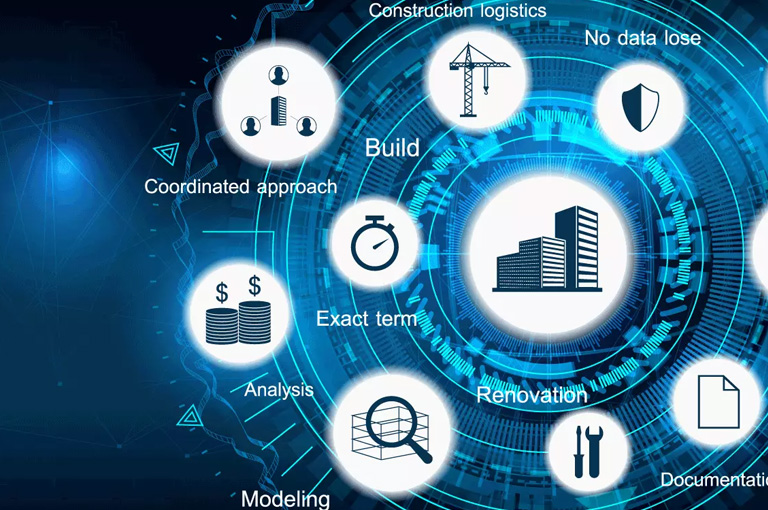Adopting BIM requires an initial effort but the benefits are many and fully reward the effort made.
BIM (Building Information Modeling) is not a design software but a real process of making a digital model of a work. BIM makes it possible to create a dynamic, interdisciplinary and shared information model: the digital twin that contains data on geometries, materials, structures, thermal characteristics and energy performance, facilities, costs, safety, maintenance, etc.
This information system is useful for the entire life cycle of the work, from the design phase, through construction, to its demolition and decommissioning.
Thanks to the BIM methodology, a building can be analyzed in detail before its actual physical realization through its virtual twin, which is the core of the interdisciplinary exchange between all the actors involved in the project.
The use of BIM allows, through the reconstruction of the digital twin of the building and all its assets, a real-time dialogue with all technological components, including furniture, extrapolating features and documentary information that are important for management, maintenance, safety and sustainability.
The creation of parametric BIM objects by companies allows designers to capture intelligent elements from which to derive any information during design such as serial numbers for ordering, pricing, weight, etc.
The use of BIM also enables better communication with their clients by allowing them to view the project interactively, through smartphones or tablets, giving them a 360-degree view of the project.
The digital twin also allows it to be used for maintenance and safety purposes, including to remind them of certification or approval deadlines.
Arch. Roberta Cecchi, of Archi+ studio, talks about BIM and its countless benefits with Stefano Bellini guests of SITLOSOPHY.
Arch. Roberta Cecchi, BIM and project manager, is co-founder of Archi+ studio in the province of Pisa. She is an expert in BIM design and specializes in site management and maintenance through the use of digital building twins. Adjunct lecturer in the third-year academic BIM Lab and related Level II BIM Master’s program at the University of Engineering of Pisa.
Watch the video of the talk.













